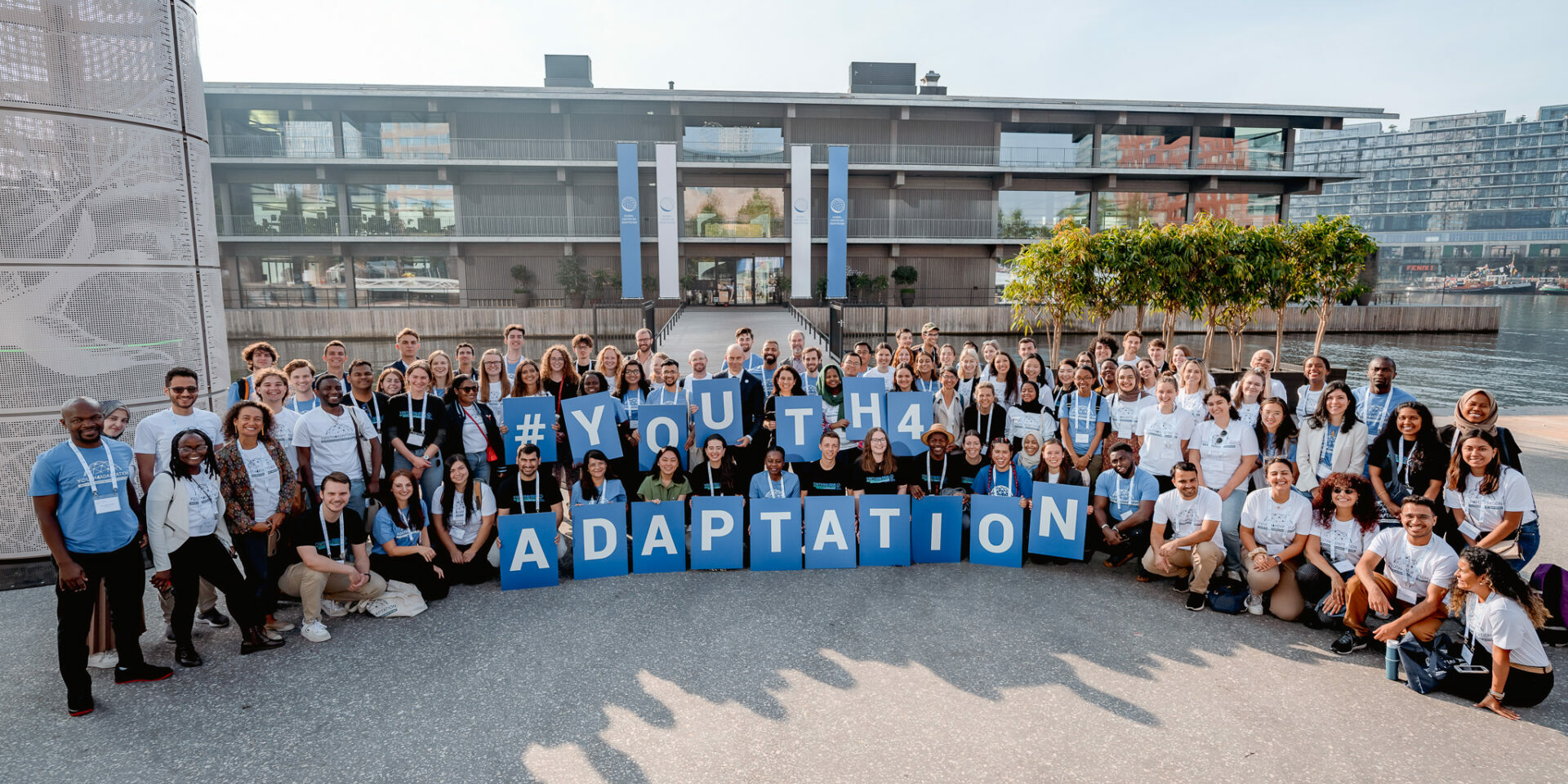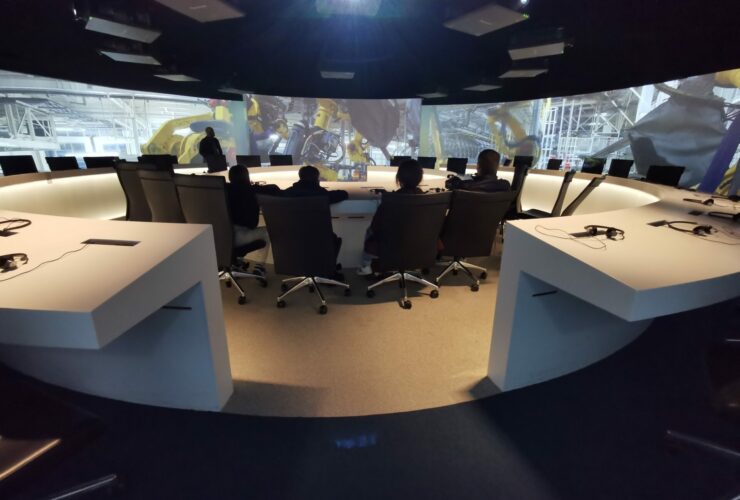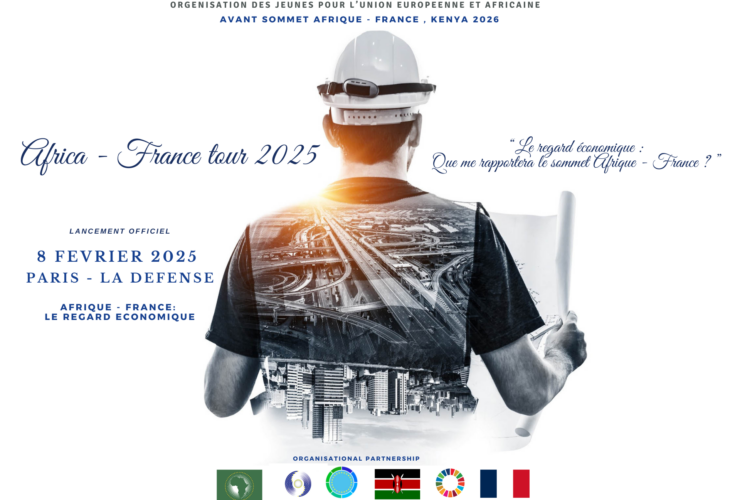YOUTH EU-AU in GCA Youth dialogue on Adaptation Action
From the 3rd to the 4th of September the GCA (Global Center on Adaptation) hosted the first global youth dialogue on adaptation action in Rotterdam. The event went ahead of the Africa adaptation summit and the coming COP 27. With 3000 applications and only 100 available spots, our organisation had the honour to have two of our members attend the event as delegates. Over the course of the two days, there was a thorough introduction to the topic of climate adaptation, a range of discussions and input from high-level guests. The entire event was engagingly moderated by Adriana Patricia Valenzuela Jimenez, who is in charge of Youth leadership in the GCA.
The main objectives of the event were to:
- Facilitate the exchange of young people’s experiences in adaptation action, advocacy and policy-making from around the world
- Accelerate adaptation action by showcasing youth-led climate-resilient solutions
- Promote the consideration of youth inputs in the review of the Global Goal on Adaptation by bringing together young leaders and decision-makers
Additionally, there was a great focus on giving participants tools to further spread the importance of this topic. There will therefore be a range of opportunities and materials linked in this report.
Saturday 3rd of September – Day 1
An introduction to adaptation
The first day started with an introduction to the topic of adaptation. Thus far rather than adaptation, mitigation has been a primary topic of discussion in regard to climate change.
The idea behind mitigation is to slow down or weaken climate change. This would for example mean lowering carbon emissions, improving public transport or becoming more energy efficient. Especially in consideration of the fact that the impact of climate change is already showing its effect on communities on a global scale, adaptation focuses on finding a way to live with the coming challenges.
Guest speaker Dr. Ede Ijjasz-Vasquez, former Africa regional director of the World Bank, gave a compelling speech on explaining how adaptation will be crucial in the coming decades. Even if mitigation was fully successful and Co2 emissions went down to 0, it would still take hundreds of years to stabilise the world’s temperature. It is therefore essential to find ways to adapt to the already ongoing changes. He emphasised that especially poor people, in developing and developed nations alike, are more affected by the impact of climate change. That is because even in rich countries, poorer parts of cities tend to have worse infrastructure and less state investment. Furthermore, countries of the global south suffer most from droughts, floods and unstable conditions and take longer to recover after a disaster happens. It is therefore important to acknowledge that climate change is not poverty neutral and affects some more than others. Especially Africa and the Pacific region have contributed least to climate change but have been some of the regions most affected by it. Nevertheless, climate change is a global problem and will take effect in most layers of society. He, therefore, underlined that adaptation is not just a cost but actually an investment, and should be seen as a business opportunity. Adaptation in itself basically means risk preparation, that for example could mean creating functional flood warning systems, planting drought-resistant crops or creating green roofs.
Climate adaptation is a relatively new but growing field of interest, with most nations having committed to it in the Paris agreement. Thus far adaptation has actually been a very female-dominated field, with many women making an impact in their local communities. The main challenges to it are lack of access to information, financing and the acknowledgement that small changes are also important and valuable. Dr Saleemul Huq, scientist and contributor to the Paris agreement, further explained that Top-Bottom approaches were not very successful when it came to adaptive measures. Instead, local consultation is crucial to finding fitting measures for specific communities. He, therefore, said young people should not wait for governments to start actions but instead start their own initiatives in their own communities.
Further information on adaptation can be found on Adaptation Exchange.
After the opening speeches and general introduction into the topic of adaptation, there were some compelling speeches by global youth leaders from all continents. After that several focus groups formulated concrete recommendations.
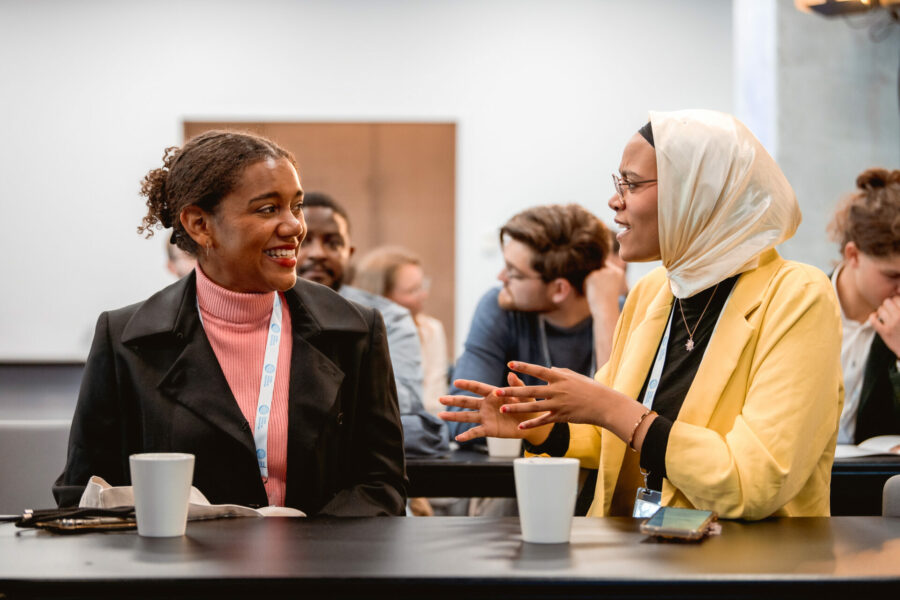
Focus Group – Education as an enabler for climate-resilient development session
Education is negatively impacted by climate change but can also be a solution to it. It allows for local-level solutions and can be especially effective in spreading community awareness. Important for this is that schools provide climate change education (CCE) and have a climate-resilient infrastructure. The session especially brought forward that much of the research on adaptation happens in a western context and that it is crucial to find evidence-based solutions in the local context.
The session provided some information for toolkits for young leaders to take on their own initiatives. These toolkits include trainer packs and online courses: CARE Climate & Resilience Academy – CARE Climate Change
Key recommendations of this session were:
- making information on adaptation accessible in multiple languages
- acknowledge the intersectionality of climate issues (gender, social class, country etc.)
- make the information tangible (simplified/easy to understand)
- find child-friendly approaches to explain climate issues to avoid climate anxiety
Focus Group – Climate Finance
Financing action is a core challenge to adaptation. In the Paris Agreement, high-income and high-polluting countries pledged their commitment to adaptation action through a joint 100 billion dollar yearly contribution for financing adaptation projects. Since the agreement entered into force, contracting parties have failed to meet this goal. In 2020 the parties fell 16.2 billion dollars short of their aim. Nevertheless, adaptation funds such as the GCA climate financing team and the Green Climate Fund make use of existing contributions. They assess adaptation projects submitted by states, based on the engagement of the applicable stakeholders and the feasibility of the projects.
The discussion in the session focused mainly on establishing “pipelines” for fast-tracking adaptation finance. Submitted projects must align with the rules of the funds and collaboration with governmental actors is necessary to establish a pipeline of financing. This is problematic as the capacity to engage in adaptation action lacks in weak or failing states. A state’s capacity to engage in climate action may be limited but the effects of the climate crisis are not. The session therefore also focused on the possibility of engaging non-state actors in the acceleration process.
Key recommendations of this session were:
- establishing an overview of executed or current projects on the website of the GCA climate financing team to inspire states and entrepreneurs and establish blueprints for projects
- to follow a more decentralised approach for the selection of fundable projects
- allowing grass-roots and humanitarian organisations such as NGOs to submit adaptation projects for funding
African adaptation entrepreneurs are strongly encouraged to apply for the African Youth Adaptation Competition –
Regional session – Europe
This session focused on actions that could be taken in Europe. A big part of this was to emphasise the European responsibility to acknowledge the impact Europe had on the climate and to take suitable measures in supporting those most affected by climate change. Since adaptation is a relatively new topic there is still a lot of space to shape the narrative and phrasing around it. It was brought forward that financial support for adaptation in developing nations should not be presented as aid. Further, there was a lot of discussion around who should get involved in adaptation and it was concluded that it is important to have experts from various fields, outside of climate proficient youth, included in decision making. This would allow for new perspectives and more consideration for the intersectionality of the climate issues.
Key recommendations of the session were:
- reshape the narrative around the European responsibility
- reduce echo chambers by including youth from different backgrounds
- have interdisciplinary policymaking
- hold governments accountable for neglecting the promises made
Regional Session – African
The African regional session focused on the next steps of continuing youth participation in the African adaptation movement. The engagement of youth in the creation of National Adaptation Plans was discussed. During the discussion, youth participation at every step of the procedure was considered. This would allow for an inter-generational implementation of problem-solving mechanisms. The session included discussions on the creation of an African Youth Council for Adaptation. It was emphasised that intersectionality was a key aspect of the success of such an institution. The image of one big African continent is blind to the diverse experiences of African youth. Considering the size of the continent, choosing one representative from each of the five regions already leads to the exclusion of groups and realities faced in light of the climate crisis. Representation remained an issue the discussions in the sessions did not settle. The question remained on how to adequately set up constituents for the planned council.
Key takeaways of the session were:
- the importance of connecting specific adaptation activists to governments in to include youth perspectives in decision making
- the goal of creating a diverse and youth inclusive council on adaptation in Africa
- recognizing the importance of and facilitating modes of communication between the connection between the council and local youth
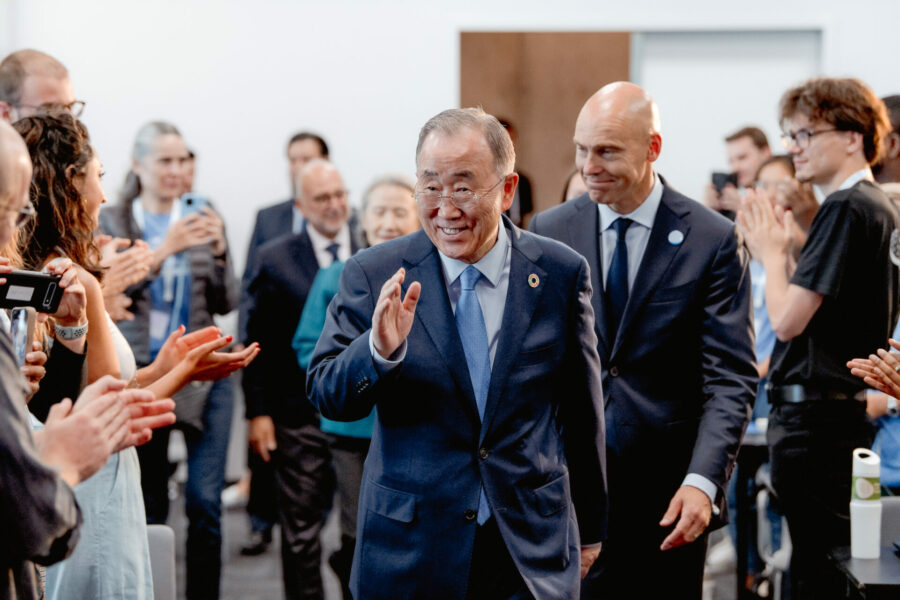
Sunday 4th of September – Day 2
In practice – visiting adaptation infrastructure
The second day started with a field trip to the GCA headquarters. The GCA is located in a floating office to allow the building to adapt to the rising sea levels. Rotterdam is a city below sea level and the high density of living poses a risk to water management. That is why water management plays a big part in the city management. Besides floating buildings, there are some other measures that residents of the city have taken to adapt to the changing climate, such as installing solar panels on their houses and combining them with green roofs. The visiting representative of the mayor of Rotterdam further stated that the government is working on creating evacuation plans for the city that are in line with the city’s infrastructure.
Afterwards CEO of the GCA Patrick V. Verkooijen delivered a speech on the importance of the inclusion of youth in decision-making processes. Participants were then led on a walk through Rotterdam, to visit sights of locally-led adaptation measures.
The importance of holistic adaptation action
The second day of the GCA youth dialogue included dynamic presentations and panel discussions by key actors in adaptation action. The connection between adaptation and sustainable development was outlined by the speakers. The impacts of the climate crisis are interdisciplinary and affect each element of human society. For example, SDG 6 aims to improve water quality and the climate crisis has a transboundary effect on decreasing water quality. Therefore, adaptation solutions must be approached holistically. Holistic action is also necessary in capacity building, financing and the housing sector.
Edith Adera, regional principal officer at the African Development Bank (ADB), gave some more detailed information on actions taken on the African continent. The ADB has an increased focus on creating jobs in the adaptation sector, through the African Adaptation Acceleration Programme. Further, there are necessary collaborations between the private and public sector. For example in the Gambia, the private and public sectors collaborated in the climate risk assessment of the port of Banjul. As outlined above, there are multiple funds accessible for adaptation action. The projects funded by the ADB are focused on supporting entrepreneurs and economic growth within the 1.5-degree celsius goal of the Paris Agreement. The ADB is aiming at bridging gaps by building capacity through the creation of jobs and combining research with practice. It is important to note that the ADB generally does not fund any projects that are related to fossil fuels.
African entrepreneurs and project developers can apply for funding here: Apply For Funding (adaptation-fund.org)
The panel was joined by former United Nations Secretary-General (UNSG) Ban Ki Moon and current deputy UNSG Amina J. Mohammed, who both outlined the importance of youth participation in climate action. Ms Mohammed focused on the role of youth at COP27 in Sharm El Sheikh, Egypt. The two-week conference features a youth day and includes a youth representative in the presidency, Dr Omnia El Omrani who also attended the dialogue. Ms Mohammed also spoke about the clear disconnect between world leadership and youth action. She strongly emphasised that youth must recruit leaders for climate action, not the other way around.

Conclusion
The GCA Youth Dialogue on adaptation action included fruitful discussions on interdisciplinary aspects of the climate adaptation agenda. The discussions concerning education, advocacy, financing and participation as well as the seven regional panels put solutions on the way to increasing adaptation action. The main takeaways of the conference were the importance of intersectionality in every step of adaptation action from education to financing, the key role of accessible information, acknowledging the climate crisis as a global issue and the need to hold historic emitters accountable, and the pivotal network necessary to bridge the gaps between youth and leadership. A final point brought up by deputy UNSG Amina J. Mohammed was that the ideas and solutions have already been generated. Instead of repeating solutions, the world must begin to implement them. Young leaders are at the focal point of this necessary shift.
Further, our OJUEA delegates have received the necessary tools to include adaptation in coming projects and conferences. Climate action is one of the crucial topics for our generation and it is important to let the awareness of that influence the organisation’s future work. The outcomes of the African Adaptation Summit, which preceded the Youth Dialogue can be found here


